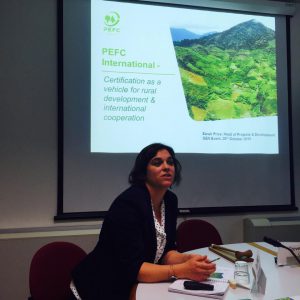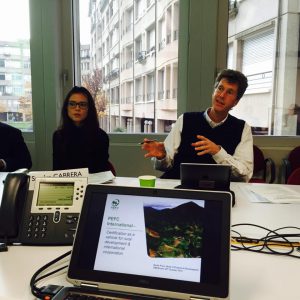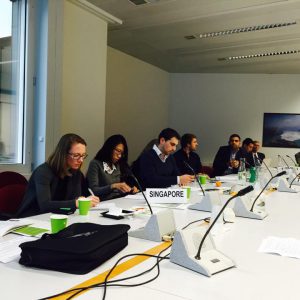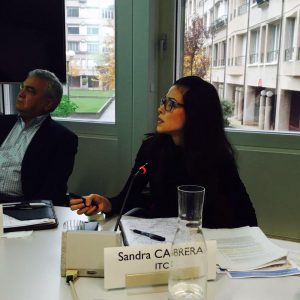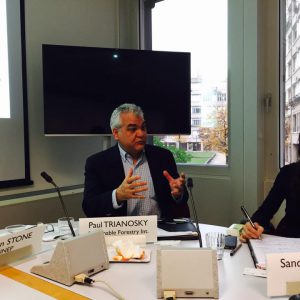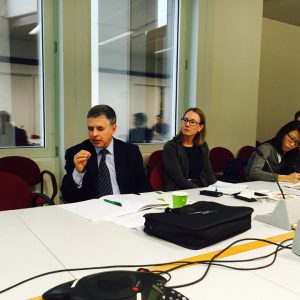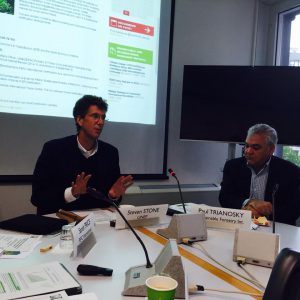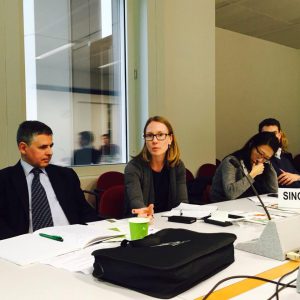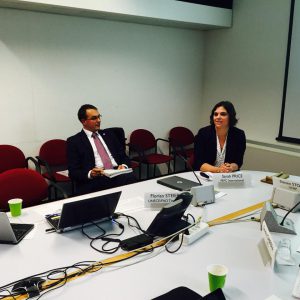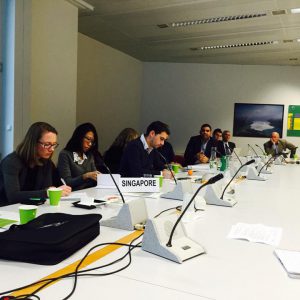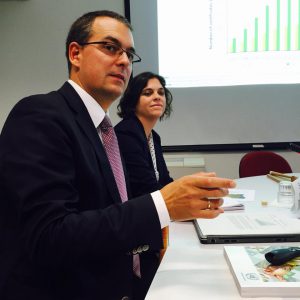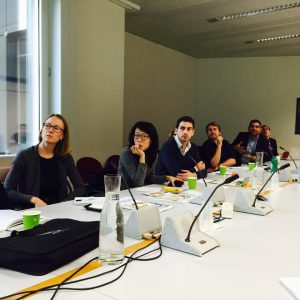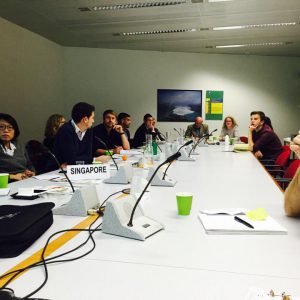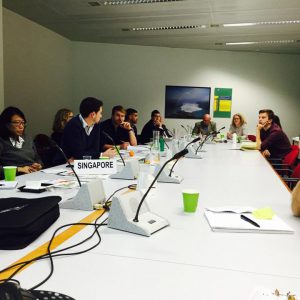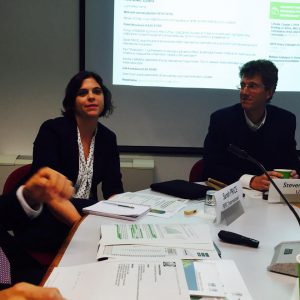Événement
Strengthening the contribution of forests and forest certification to the Green Economy

28 Oct 2015
12:00–14:00
Lieu: International Environment House
Organisation: Geneva Environment Network
A briefing and discussion on forest certification developments was held at the International Environment House I on Wednesday 28 October 2015.
Forests play a critical role in a green economy through its potential for supporting sustainable development and poverty eradication. Investing in forest maintenance and reforestation activities could aid the green economy transition. It can increase economic activity, create employment, and mitigate the risks of climate change. For these reasons, this ecosystem must be preserved and used in a sustainable manner for a low-carbon future.
A briefing and discussion on forest certification developments was held at the International Environment House I on Wednesday 28 October 2015, from 12:00-14:00.
Agenda
Light refreshments
Welcome and introduction (12:00-12:10)
Steven STONE, Chief UNEP Economics & Trade Branch (ETB) and the Green Economy Initiative
Panel discussion (12:10-13:00)
Florian STEIERER, Economic Affairs Officer, UNECE/FAO Forestry & Timber Unit Certification highlights of the UNECE/FAO Forest Products Annual Market Review 2014-15 (published on 4 September 4)
Sarah PRICE, Head Projects & Development, PEFC International Certification as a vehicle for rural development and international cooperation
Paul TRIANOSKY, Vice President Conservation & External Affairs, Sustainable Forestry Initiative Inc, Outlining a new initiative to measure the conservation impacts of SFI certification
Sandra CABRERA, Standards Analyst, International Trade Centre, The link between forest certification and sustainable trade
Q & A session (13:00-14:00)
Open forum where participants can provide their own brief certification updates.
Discussion and documents
Steven STONE welcomed all the participants and introdcued the thematic to be covered by the roundtable.
Florian STEIER (download presentation) started by explaining the main role of UNECE and the joint section UNECE/FAO Timber Section. The ECE Region is the northern regions which represents 40% of world forest area, with the majority in Canada. This region also represents 60% of the world’s industrial roundwood production, 88% of the worlds certified forest area. There has been a strong increase in certified forest area from 2001-2015. 11% of global forest area is certified. It is however hard to get information on how much wood is available on the market in volumes. How many wood products are actually certified? How much product on the global market is certified?
The market review issued by the joint section last September provides an estimate. Florian also mentioned that government are losing control of certification, in some countries government role is minimal or even non-existent. New standards arising like ISO, what role do they play?
Sarah PRICE (download presentation) from PEFC International explained that PEFC is the world’s largest certification system by forest area. PEFC is the world’s largest certification system by forest area. It was founded by small forest owners in response to FSC. Small forest owners know how to manage their forest but could not get a seat with FSC, so they seeked to make a new certification system. PEFC believes sustainable forest management is a national conversation. They maintain a global requirement to what is sustainable forest management and national systems must meet or exceed these requirements. They involve ISO, and other norms in their process.
Forest certification aims to deliver assurance to the consumer, obeying national agreements, sustainably manage forests – legal, from well managed forests, traceable. How do they grow certified forest area in developing countries, and places where it is more crucial to develop sustainable forest certification?
Impact and benefits when working internationally:
1. Empowering smallholders and sustaining livelihoods: 30% of worlds forest are owned by smallholders, families, indigenous people. How can we support them to manage their forests sustainably and how can they benefit from them? Huge challenges when smallholders are trying to manage their forests: access to markets, investment, economy of scale. We have procedures that encourage smallholders to come together to get certification, group certification. Having each individual apply separately and pay the auditing cost is infeasible.
2. Encouraging collaboration amongst diverse actors: multi-stakeholder dialogue – without it people would not know what forest certification is. Supporting multi-stakeholder processes to build consensus around sustainable forest management. Creating local ownership and involvement in sustainable forest management.
3. Addressing deforestation and mitigating climate change: Preventing forest degradation, prohibiting forest conversion, establishing supply chain transparency, and strengthening consumer trust. We want to integrate forest products into the green economy.
Paul TRIANOSKY (download presentation) presented SFI, the north American (US and Canada) face of PEFC. Products that are SFI certified are sold in more than 120 countries. About 70% of forests are certified by PEFC endorsed standards such as SFI and CSA. They have certified procurement standards when they source products from non-certified forests and forest products.
Sandra CABRERA (download presentation) started by presenting ITC mission, which is to enable small and medium enterprises to access markets. One of the focus areas is promoting and mainstreaming green trade. How do they do this? 6 components:
1. T4SD Global Database: establishes a common language to reference standards initiatives.
2. Standards Map: accessible for companies, standards organizations, decision makers. You can do a self-assessment.
3. Sustainability marketplace: allows user to connect with buyers. Gives power to enterprises.
4. Sustainabilityxchange: knowledge sharing platform with resources on sustainability. Directory of experts. Section of news and events. Organizations can create profiles there.
5. Capacity building and research: going to the field and training people to use these tools and information. It is very technical so it is our mandate to help any possible confusion.
6. Special projects: we need to respond to specific needs of our stakeholders. Could be demand or supply side.
Certification delivers assurances that forest is under sustainable management – what benefits you drive from that is completely up to the owner of the forest.
https://www.genevaenvironmentnetwork.org/wp-content/uploads/2020/05/invitation_28_october_2015_0.pdf
https://www.genevaenvironmentnetwork.org/wp-content/uploads/2020/05/steierer_certification.pdf
https://www.genevaenvironmentnetwork.org/wp-content/uploads/2020/05/pefc_gen_event_28-10-2015.pdf
https://www.genevaenvironmentnetwork.org/wp-content/uploads/2020/05/gen_trianosky_10-15.pdf

